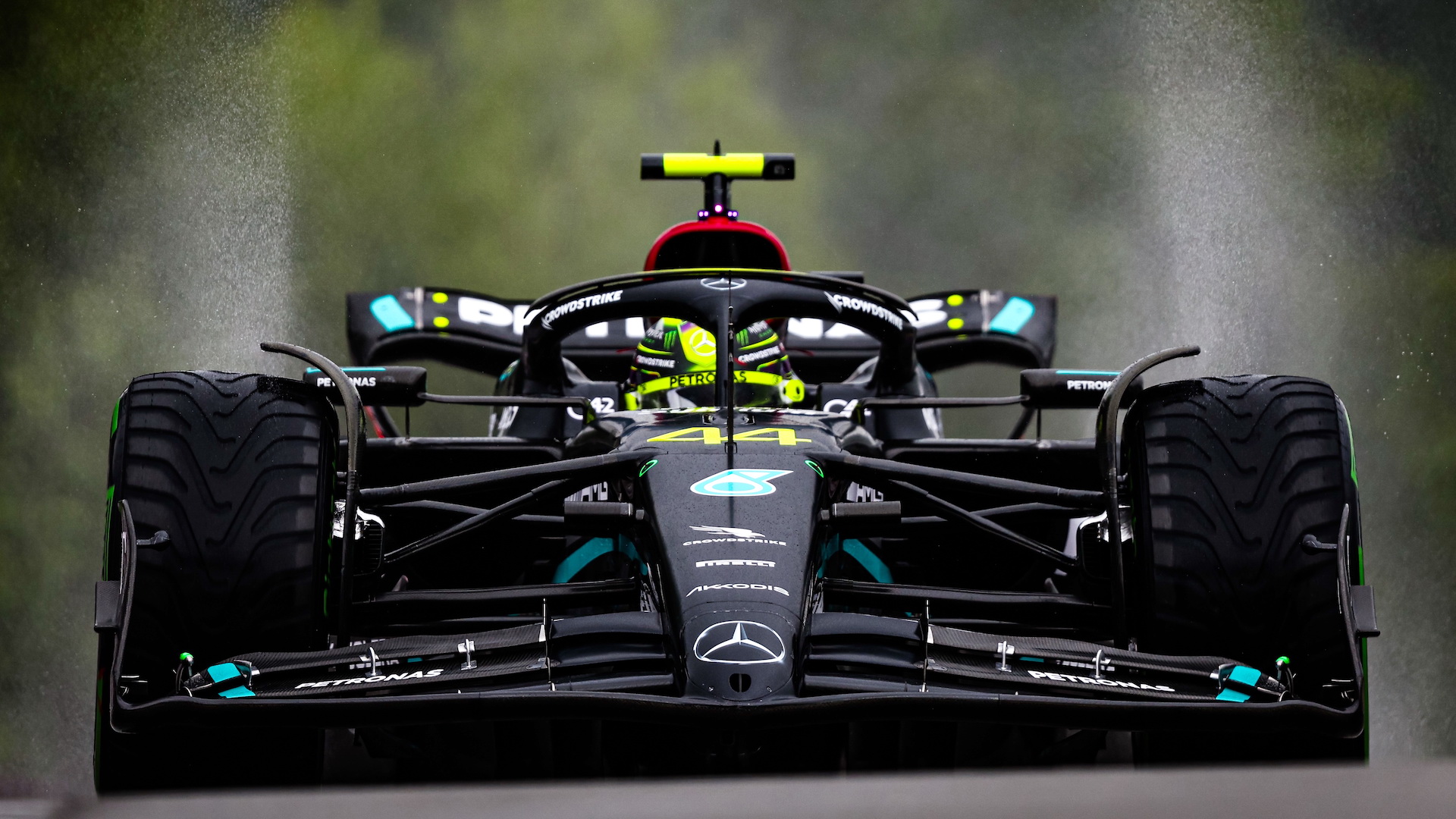

We may earn revenue from the products available on this page and participate in affiliate programs. Learn more ›
One of the first questions new Formula 1 fans often ask is how fast the cars go. The short answer is that it depends, but more than 220 mph. The long answer gets more interesting though, because F1 cars’ top speeds have changed wildly over time—and even can day-to-day.
Modern F1 cars’ top speeds are highly variable, as they must race at more than 20 distinct tracks around the globe in a season. That means these highly complex machines must adjust their suspension and aerodynamics to suit the track, from the slow, tight Monaco to the fast, flowing Monza. Step back and look at the bigger picture, and you’ll see an even more pronounced change, especially when teams test their cars outside of F1 to see how fast they really go.
But we’ll get to that later. First, let’s talk about what modern F1 cars can do.

How fast do F1 cars go?
F1 cars are some of the fastest circuit racing vehicles on earth, rivaled pretty much only by endurance racing prototypes and, in some cases, IndyCar. In 2023, the fastest speed hit so far is 223 mph, reached by Mercedes-AMG’s Lewis Hamilton at the Italian Grand Prix. They can go quicker, but we’ll get around to that later.
You may be thinking, “Now hold on a sec. Isn’t that slower than some supercars? Hasn’t Bugatti blitzed past 300 mph? Why do the so-called fastest race cars in the world get out-dragged by a road car?” Well, the highest top speed is good to have on your side, but it’s only a very small part of winning in F1.

Straight-line speed offers plenty of passing potential, but if that comes at the expense of acceleration or cornering performance, then it can wreck your lap times. F1 cars win by getting around the track in the shortest time possible, which requires short gearing that trades top speed for acceleration and aggressive aerodynamics that generate downforce—but also drag, which hurts top speed too.
In the case of Hamilton at Monza, hitting the highest top speed on F1’s fastest track didn’t mean he bagged the race. He finished sixth, some 43 seconds behind the winner Max Verstappen who topped out at only 217 mph. And even Hamilton’s top speed doesn’t claim a record for the fastest speed reached by an F1 car.
Gotta Go Fast
The highest speed an F1 car has hit during a Grand Prix was achieved by Valtteri Bottas in 2016, then at the wheel of a Williams. Chasing a Red Bull down the pit straight at the Azerbaijan Grand Prix, he used its slipstream to touch 235 mph. It wasn’t enough to complete a pass, but it did etch his name into the history books. But note how I said “during a Grand Prix,” because this isn’t the outright record either.
A decade earlier in 2006, Honda tried to hit 400 kmh (248.5 mph) at the Bonneville Salt Flats using a modified F1 car. (Whether that counts or not is up to you.) It tweaked the RA106 (a renamed BAR-Honda 007 from 2005) to maximize its top speed, deleting its rear wing and adding a tail fin for stability. Even so, the wingless, nearly 1,000-horsepower V10 Honda was a handful and a half. According to Motor Sport Magazine, its driver drifted and spun at around 200 mph on the loose, salty surface, and on one occasion bounced 22 feet without touching the ground.
But they stuck with it and, on a measured run, got close to their goal: 397 kilometers per hour, or 247 mph. That’s the fastest speed an F1 car has ever reached with independent verification.

But Wait, There’s More
Unofficially though, the Honda went even faster in testing, with driver Alan van der Merwe claiming the car did 415 kph in a two-way test. That’s 258 mph, or dead even with the limiter on the Bugatti Veyron SS, the former world speed record-holding production car. Even faster might have been possible too, as van der Merwe mentioned Honda had a longer top gear that it just didn’t use.
So there you have it: a modern F1 car will do more than 220 mph, though its ultimate potential probably lies well beyond 250. It’s within F1 teams’ power to explore that territory if they dare, so we may yet see someone raise the BAR. Get it? The BAR-Honda? Raise it, as in… Never mind.

